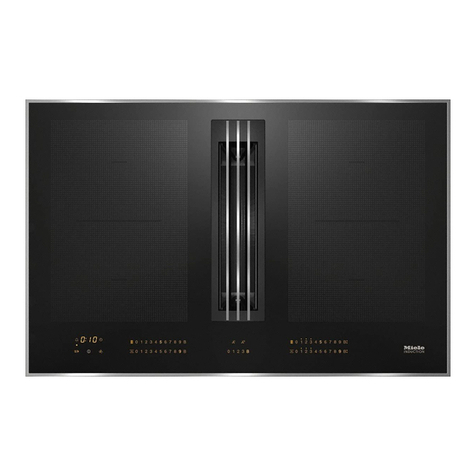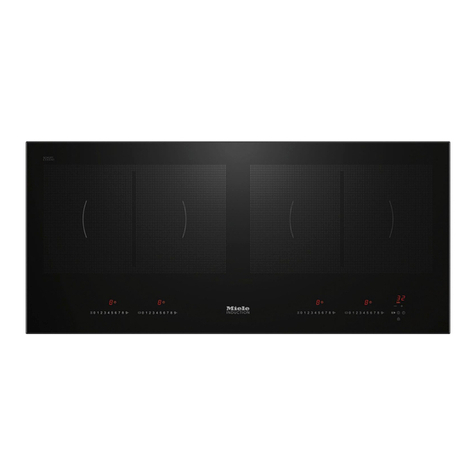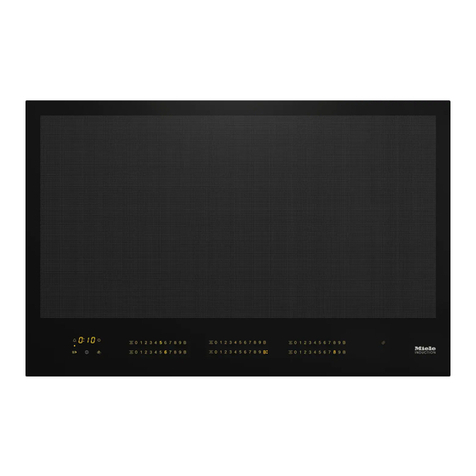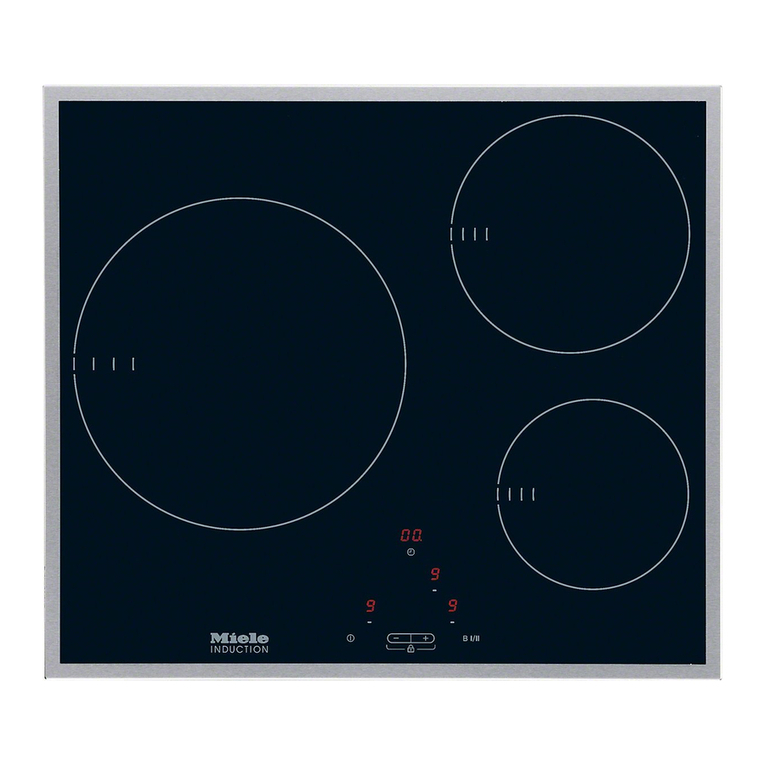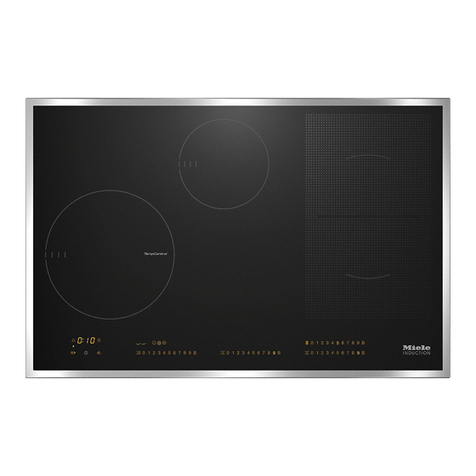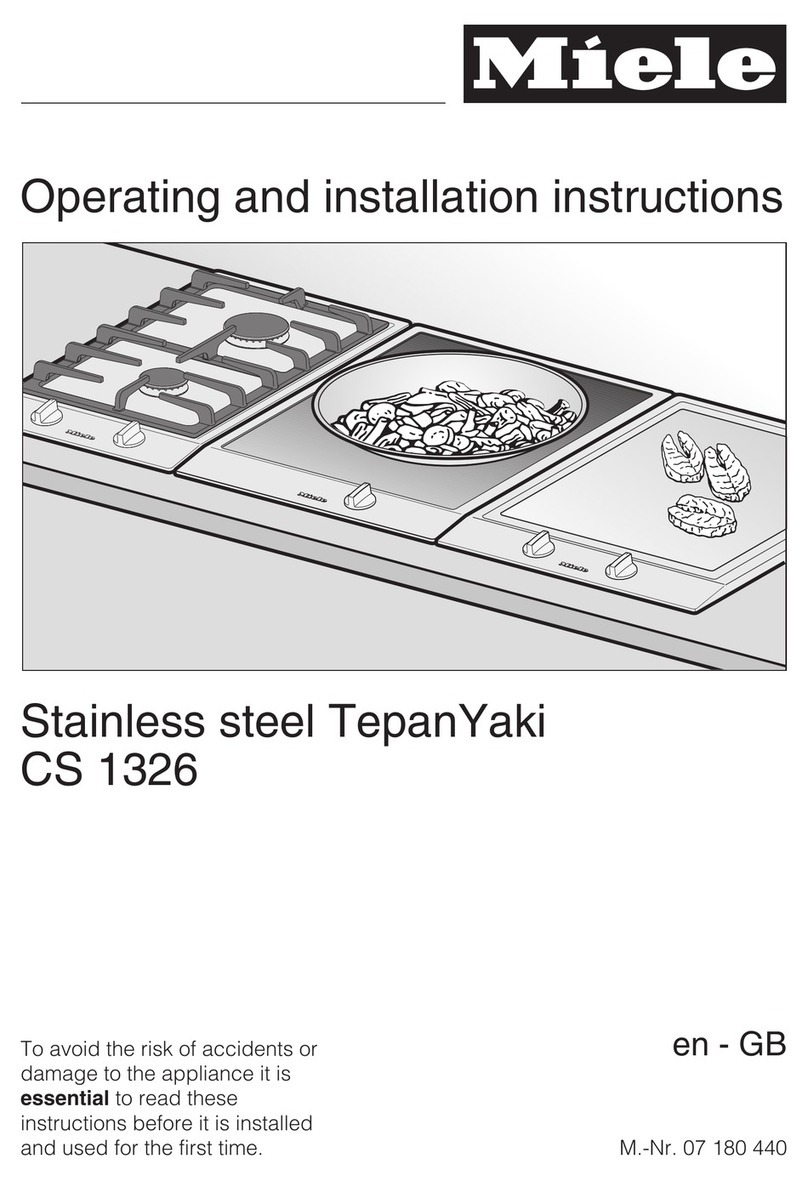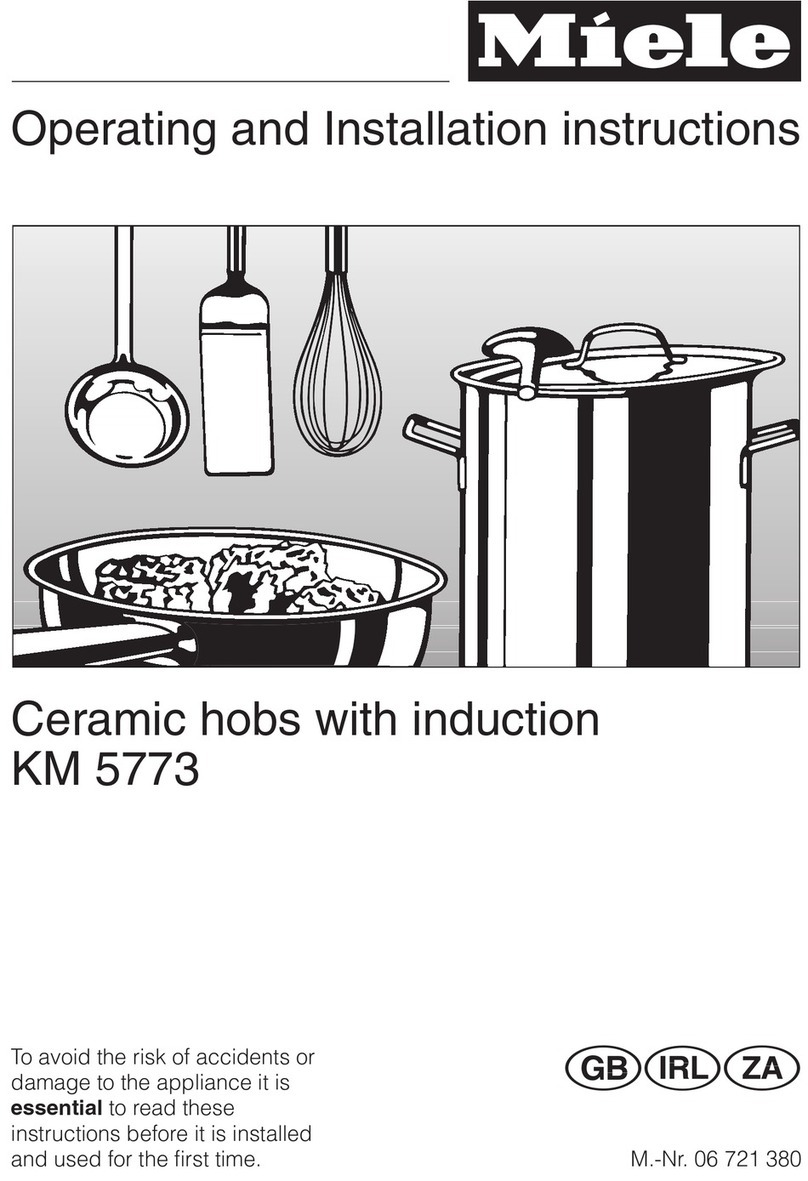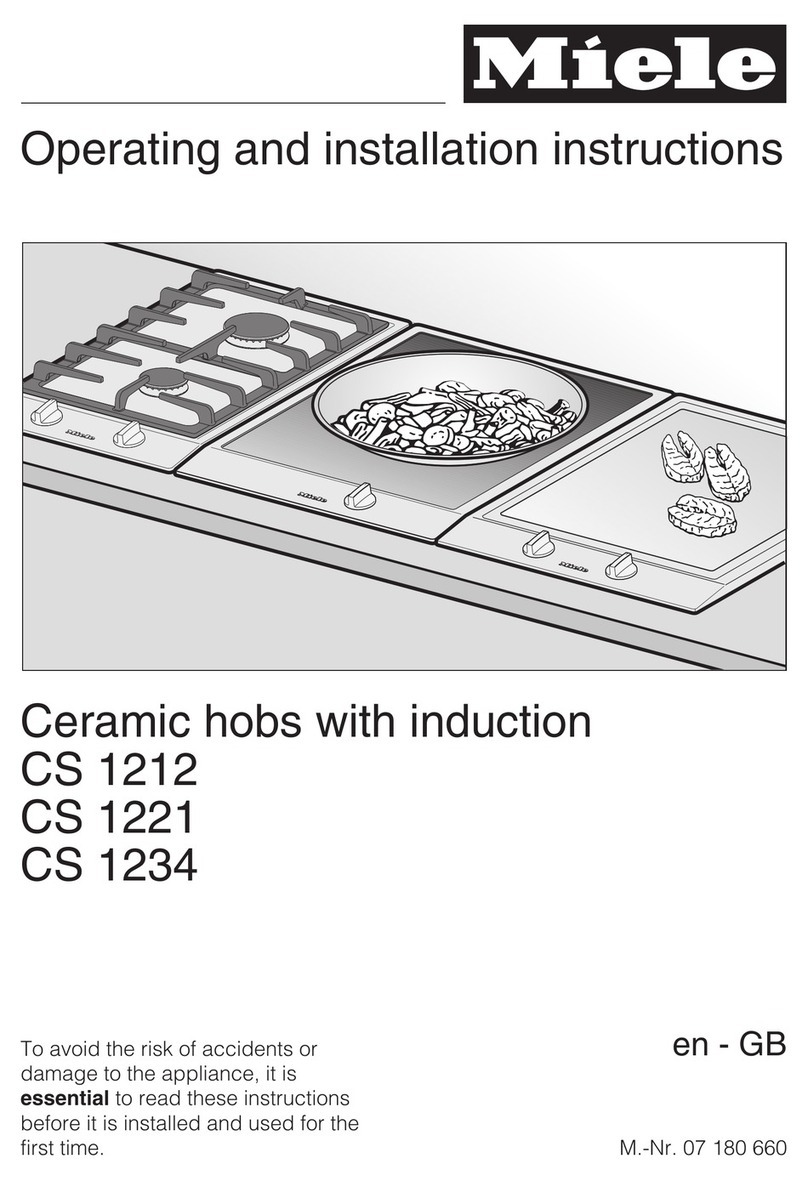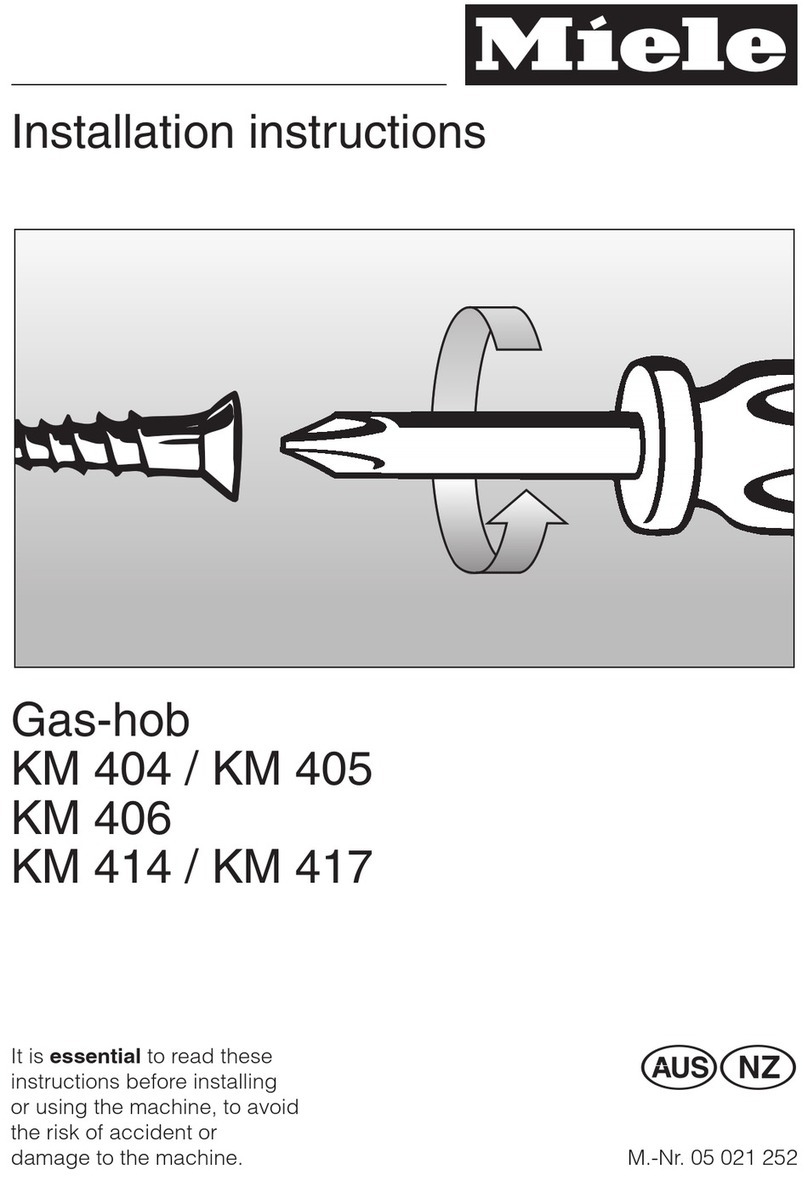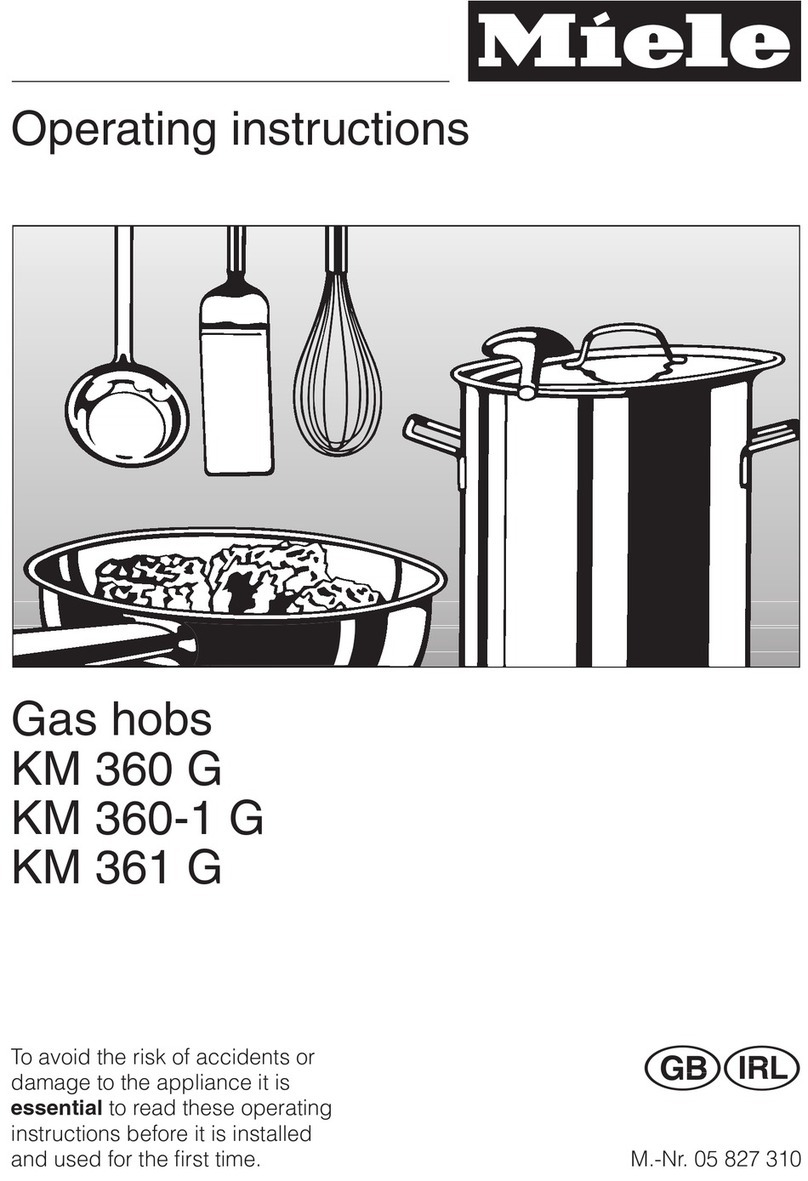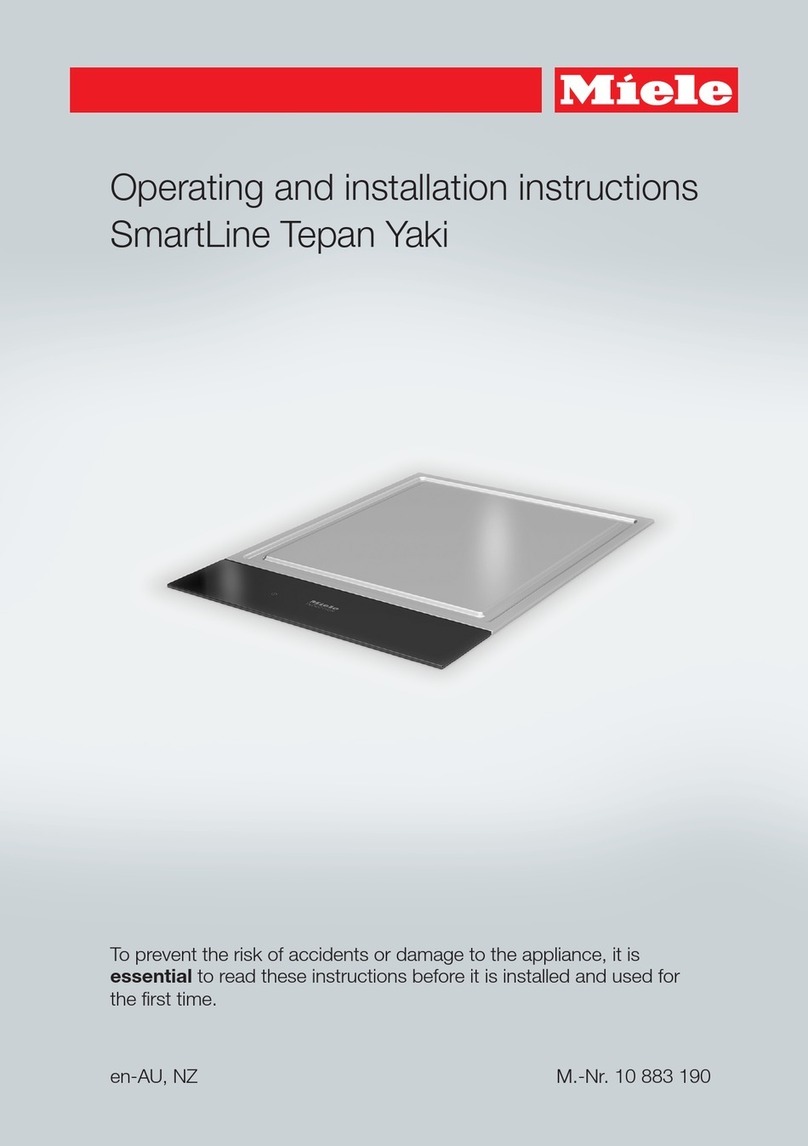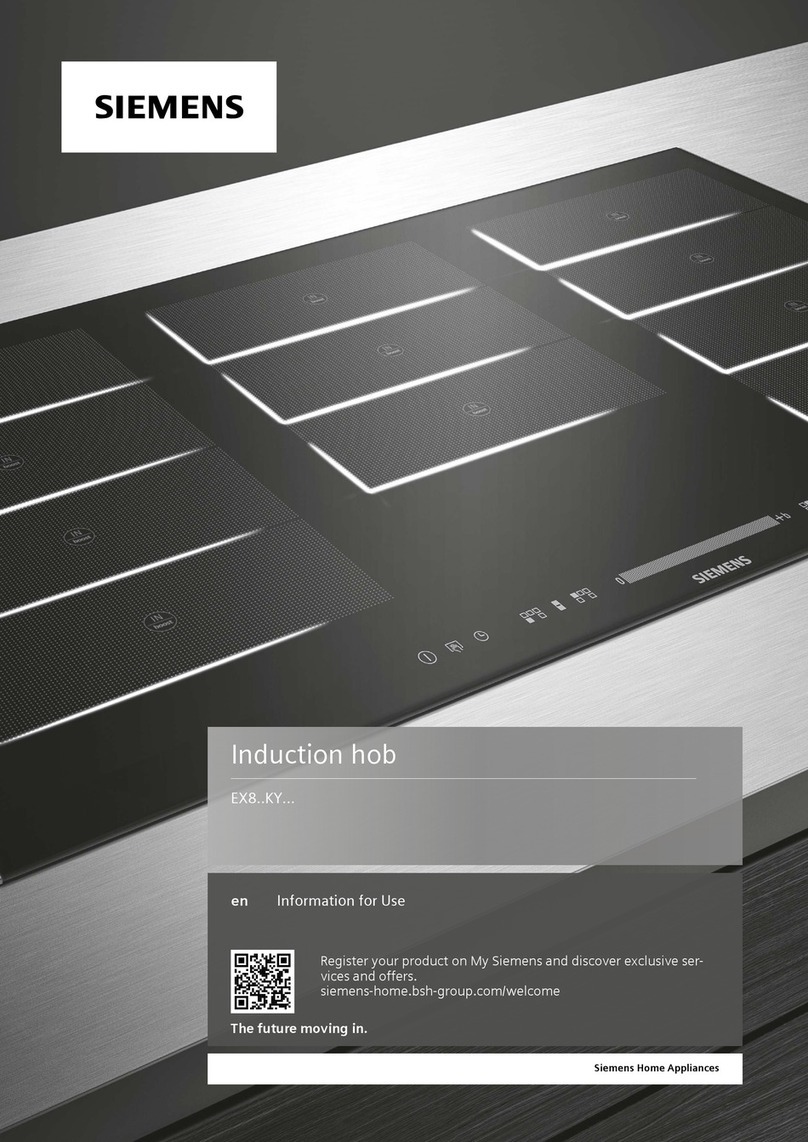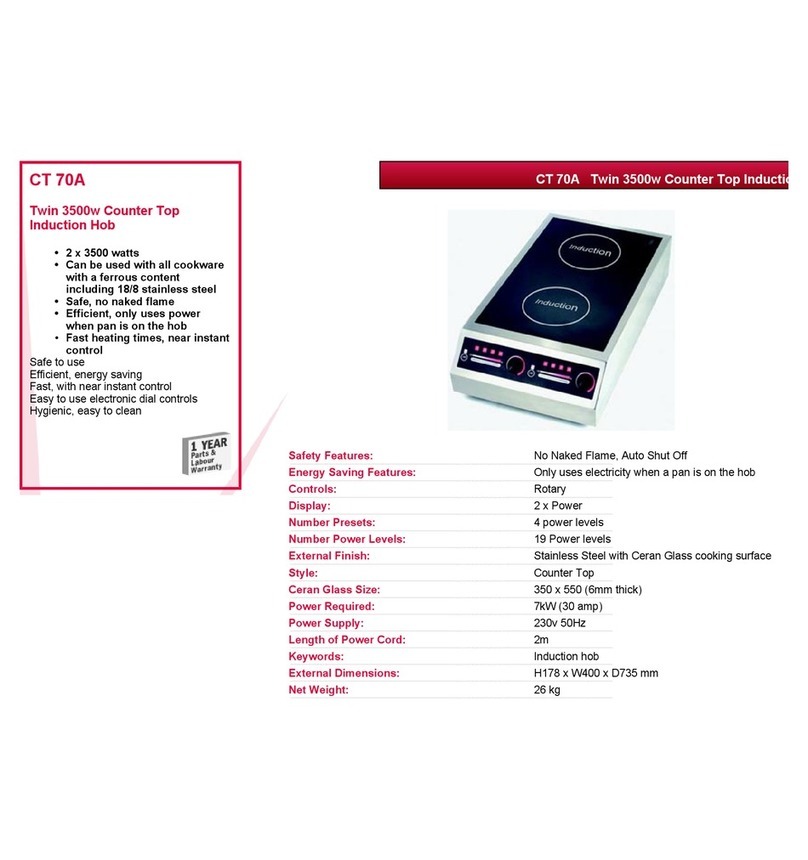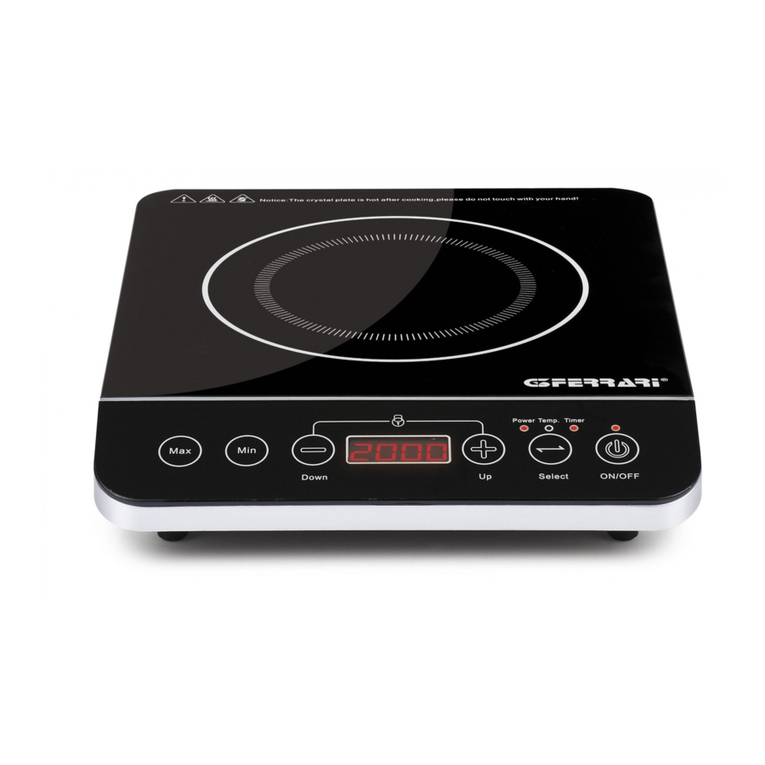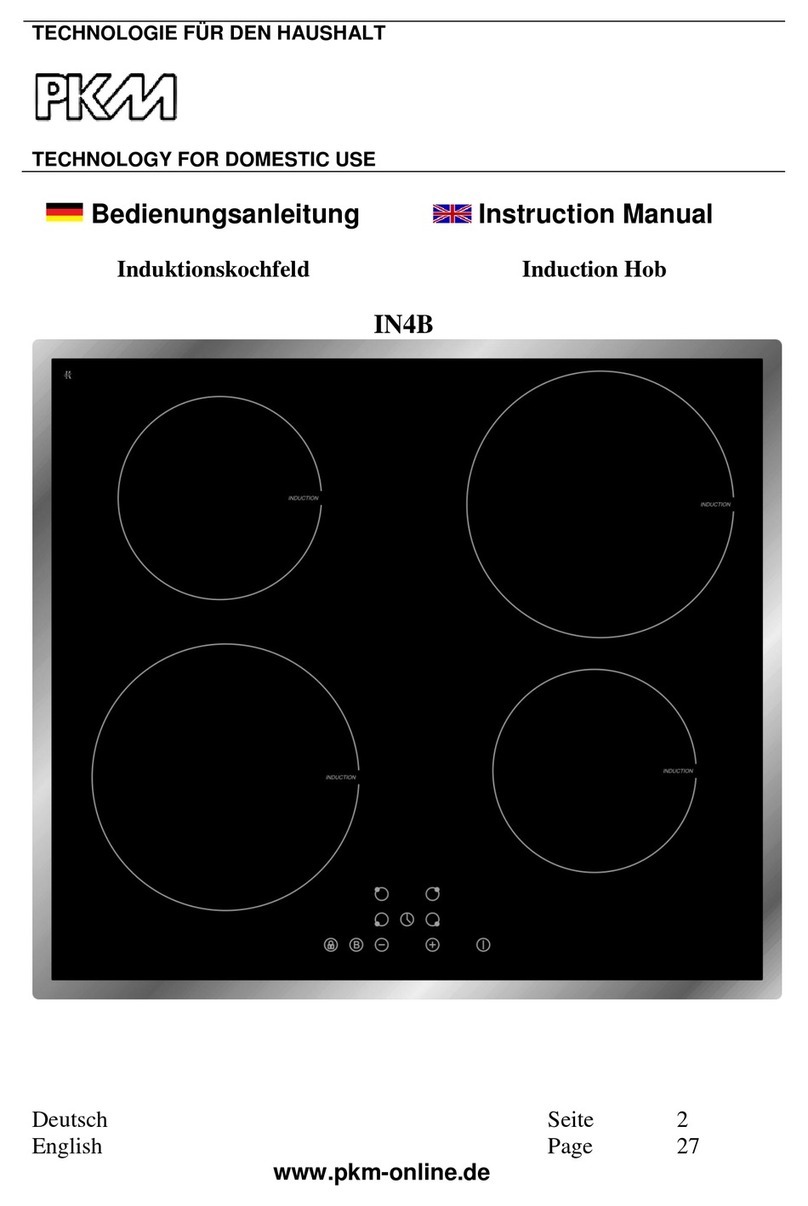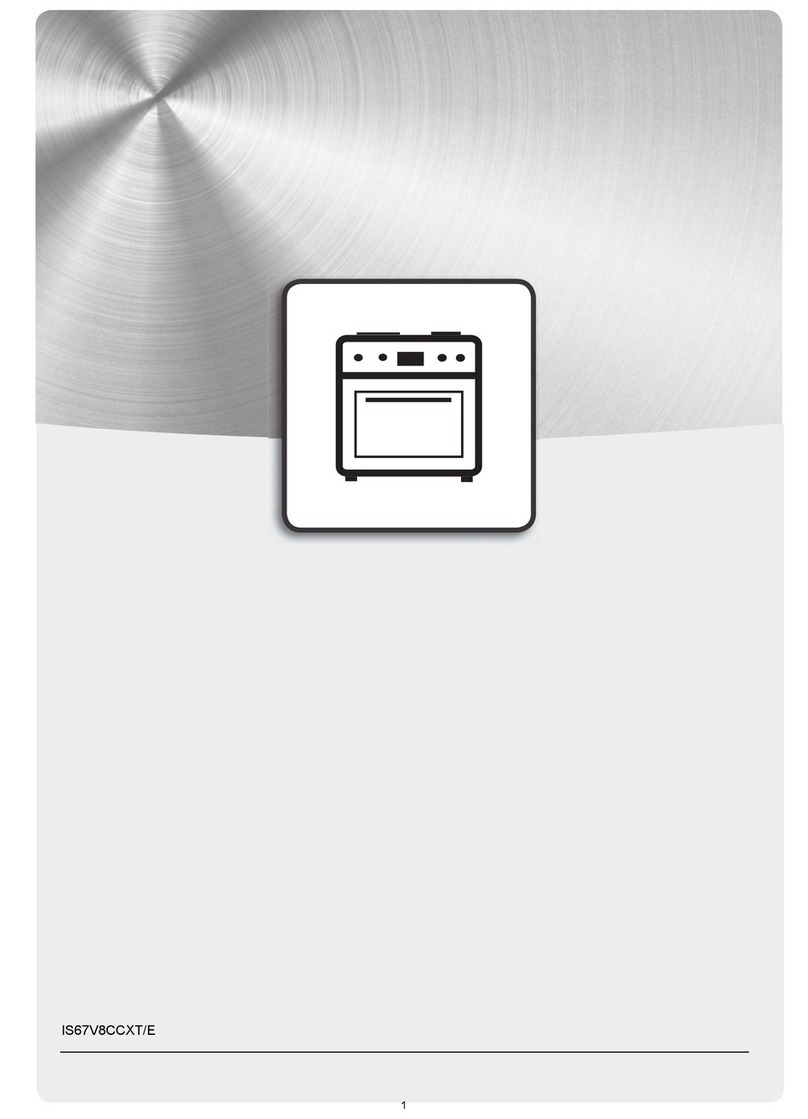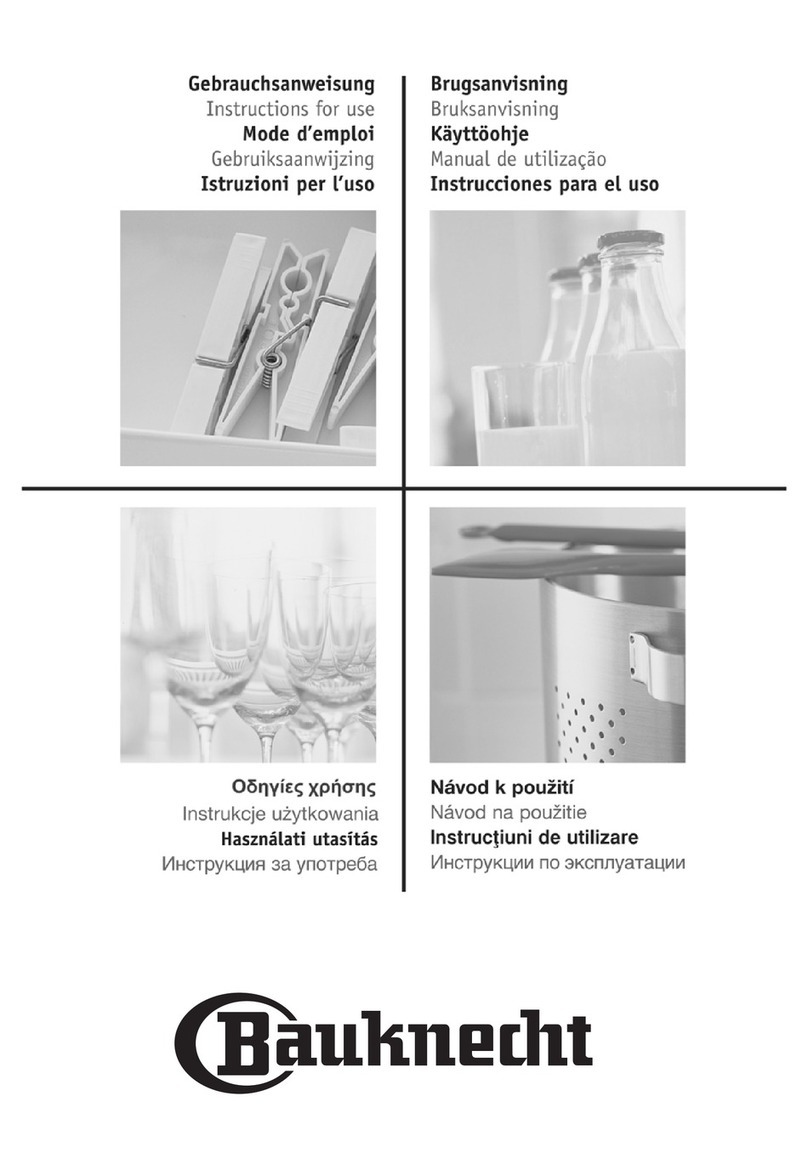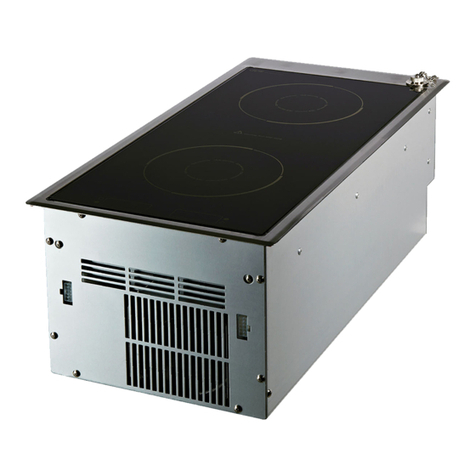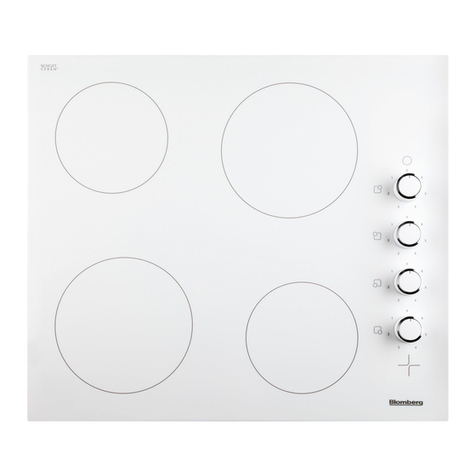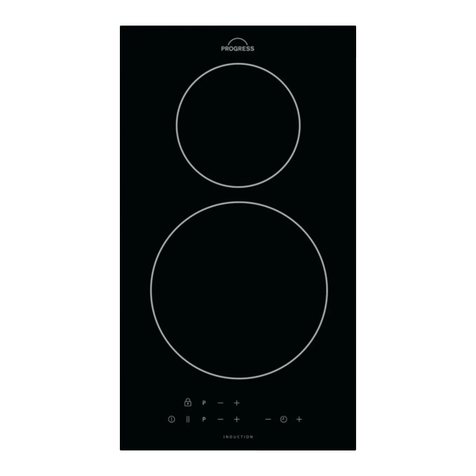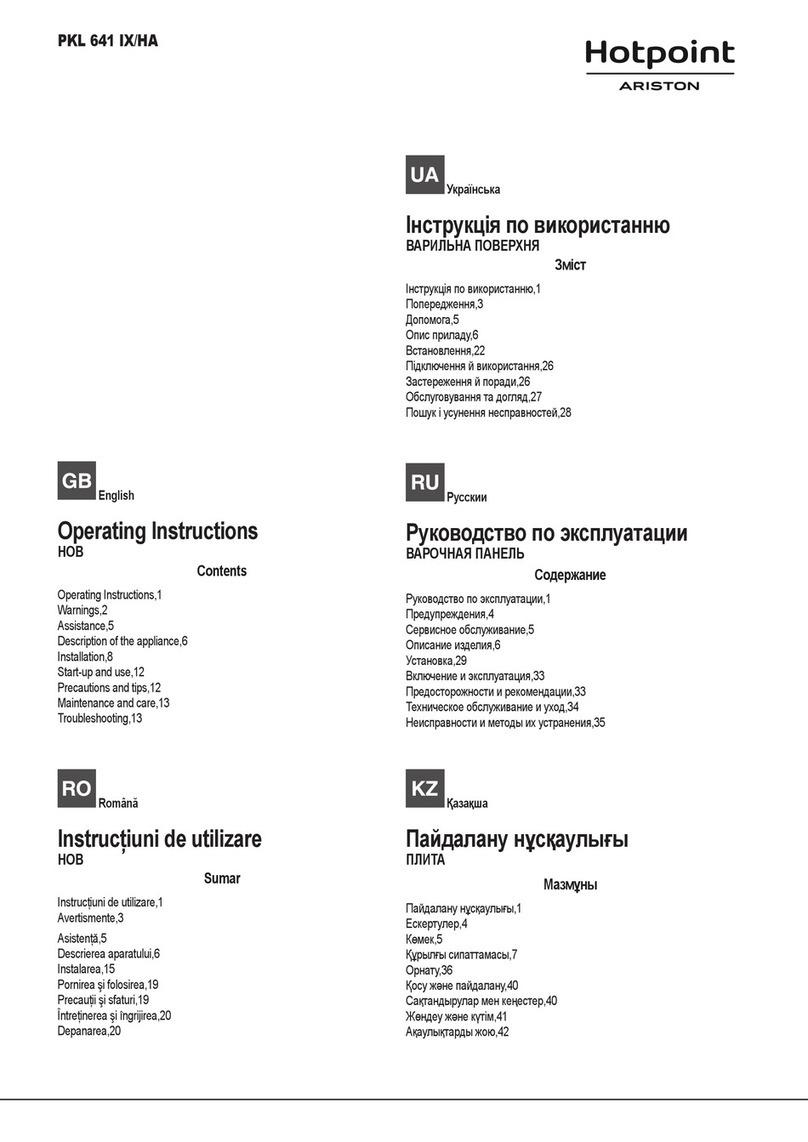Warning and Safety Instructions
This appliance complies with all rele-
vant legal safety requirements. Im-
proper use of the appliance can,
however, present a risk of both per-
sonal injury and material damage.
Before installation and before using
the appliance for the first time read
the operating instructions carefully.
They give information on safety, on
the operation and care of the ap-
pliance. This way you will avoid the
risk of accidents and damage to the
appliance.
The appliance is intended for do-
mestic use.
Should it be installed for commercial
use the relevant regulations must be ob-
served.
For safety reasons, this appliance
may only be operated as a built-in
appliance. This is necessary to ensure
that all electric components are
shielded.
The electrical safety of the ap-
pliance can only be guaranteed
when continuity is complete between
the appliance and an effective earthing
system which complies with local and
national regulations. It is most import-
ant that this basic safety requirement is
regulary tested by a qualified electri-
cian. The manufacturer can not be held
responsible for the consequences of an
inadequate earthing system.
Installation work and repairs may only
be carried out by suitably qualified and
competent persons to ensure safety.
Repairs and other work by unqualified
persons could be dangerous.
Do not connect the appliance to
the mains electricity supply by an
extension lead. Extension leads do not
guarantee the required safety of the ap-
pliance.
Please ensure that the domestic
supply corresponds to the informa-
tion on the machine’s data plate.
The appliance is only completely
isolated from the electricity supply
when it is switched off at the wall
socket, or the mains fuse is withdrawn.
Do not pull by the mains cable, but by
the plug when withdrawing the plug
from the socket.
The distance between the hob and
a cooker hood should be at least:
55 cm for electric hobs.
Australia: 60 cm!
To avoid the danger of fire do not
flambe under a cooker hood.
Do not let small children touch the
appliance during operation. Not
only do the cooking areas of the ce-
ramic hob heat up, but also the control
panel. Danger of burning. Keep all
pans out of the reach of children.
Supervise use of the hob by the elderly
or infirm.
Warning and Safety Instructions
6
